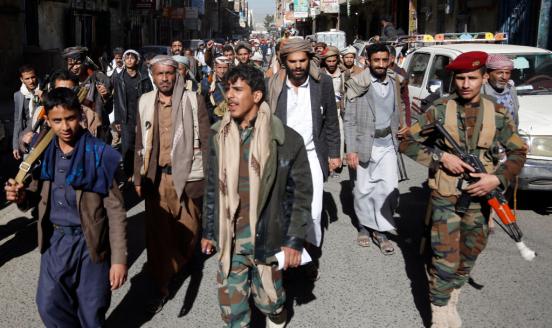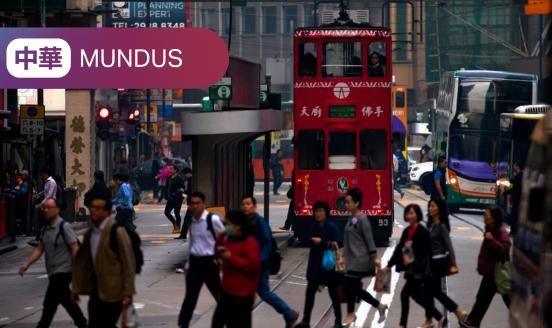Iran: from isolation to economic cooperation
With some sanctions temporarily lifted, now is the chance for Iran to reintegrate into the global economy and political system. But comprehensive econ
Iran, together with the five permanent members of the United Nations Security Council and Germany, signed a Joint Comprehensive Plan of Action (JCPOA) in July 2015, allowing the EU and US sanctions related to Iran’s nuclear program to be temporarily lifted. This has opened the door to Iran’s gradual reintegration into the global economic and political system (Blockmans et al., 2016).
Reintegration may offer substantial benefits for Iran, its neighbours, and other major economic players, including the EU. However, to grasp the potential benefits of such cooperation, Iran and its partners must bring down existing barriers to trade and investment flows. In particular, Iran should continue its comprehensive economic reforms and abandon the protectionist policies it has conducted since 1950s[1].
Basic facts
Iran has the 18th largest population in the world (approaching 80 million) and the 18th largest economy, with a GDP close to 1.4 trillion international $ in purchasing power parity (PPP) terms[2], just behind Canada, Spain and Turkey. It represents 1.2% of the world’s GDP. Its GDP per capita of current international $17,251 (in PPP terms) gives it an upper-middle-income status, according to the World Bank’s country grouping.
This means that Iran represents the world’s ‘average’ level of economic development. It has a similar territorial, demographic and economic potential and income level to its western neighbour Turkey. However, there are huge differences between both countries in terms of their economic structure, economic systems and degree of external openness.
Growth volatility
Despite more than a decade of high oil prices, Iran has enjoyed only a short period of relatively high economic growth (2006-2007), as shown in Figure 1. The global financial crisis and resulting decline of oil prices in 2008-2009 slowed growth in Iran, and the recovery of the oil price since mid 2009 has given only one year of high growth (2010), which was followed by a deep recession (2012-2013).
The international sanctions related to Iran’s nuclear program were only one reason for this fall in output. Another, perhaps more important, factor is related to the populist economic policies of the second administration of President Mahmoud Ahmadinejad.
Changes in economic policy after election of Hassan Rouhani as the President of Iran brought visible improvements in 2014, even before the JCPOA was signed and international sanctions lifted. However, the sharp decline in oil prices since the second half of 2014 caused economic stagnation in 2015.
High inflation
The populist policies of President Ahmadinejad also created persistent inflationary pressures, as illustrated by Figure 2. By 2014, end-of-year inflation was always two-digit, frequently oscillating around 20% and reaching over 40% in 2012. This was caused by an extremely lax monetary policy, manifested by the high annual growth rate of both the central bank’s reserve money and broad money (between 20 and 30%) and deeply negative real interest rates (IMF, 2015, p.29, Figure 5). This policy has started to change since 2014, leading to partial disinflation. As a result, end-of-year inflation has reached a one-digit level (9.4%) in 2015, for the first time since 2000.
Consequences of lower oil prices
Despite the partial lifting of sanctions and improvements in domestic economic policy, Iran faces serious headwinds caused by the dramatic decline of hydrocarbon prices. This is due to the dominance of the oil and gas sectors in the Iranian economy. According to data from the World Bank’s World Development Indicators, the oil and gas sectors contributed 70% of Iran’s merchandise exports in 2011, and oil rents amounted to 22.3% of GDP in mid-2013.
The consequences of lower oil prices are not limited to growth stagnation (Figure 1). Cheaper oil has also contributed to a deterioration in Iran’s balance-of-payments (Figure 3) and fiscal accounts (Figure 4) - although compared to other net oil exporters they look manageable (Dabrowski, 2015). Iran managed to avoid GDP decline in 2015, unlike Venezuela or Russia. Its current account balance deteriorated but remained in positive territory. Iran’s fiscal balance has been negative since 2012, but has not yet exceeded 3% of GDP. General government (GG) gross debt reached 17.1% of GDP in 2015 while the net GG debt (gross debt minus accumulated fiscal reserves) amounted to only 1.8% of GDP.
Nevertheless, assuming that oil prices will not return to pre-2014 levels anytime soon, the country needs further fiscal and macroeconomic adjustment. It must diversify its real sector so that it is not so dominated by hydrocarbons.
The subsidy challenge
Fiscal adjustment should concentrate on increasing tax receipts in the non-oil sector (in 2015 the value added tax (VAT) was only 9%) and elimination of subsidies, especially in the energy sector. Like many other major oil producers, especially in the Middle East and North Africa (MENA) region, Iran has long kept domestic prices for oil, other energy products and basic food items such as bread low, considering this a social protection measure. But administrative price controls in an inflationary environment (see above) lead to rapidly increasing subsidies, as result of the politicisation of prices and a reluctance to allow rapid price changes.
Energy and other consumer subsidies can be measured in two ways: as pre-tax subsidies and post-tax subsidies (see Clements et al. 2013 for details). Pre-tax subsidies are defined as the difference between the value of the supplied products and services at either international prices (tradable goods) or cost-recovery prices (non-tradable goods), and the domestic prices paid by their consumers, both final and intermediate. Post-tax subsidies are the sum of pre-tax and tax subsidies. The latter are measured as the difference between the efficient taxation that takes sufficient account of externalities (in the case of energy, for example, this is the environmental impact of its production and consumption) and actual one.
In 2011, according to Clements et al. (2013, Appendix Table 2, p.50), pre-tax subsidies on petroleum products in Iran amounted to 4.20% of GDP, on electricity ‑ 3.61% of GDP, on natural gas – 4.83% of GDP. This gives a total of energy related subsidies of 12.64% of GDP. Post-tax subsidies were even higher. They accounted for 7.66%, 3.64% and 6.39% of GDP, respectively, i.e., 17.7% of GDP total (Clement et al., 2013, Appendix Table 4, p.60). That is, they were close to the size of GG revenue in 2011 (19.2% of GDP).
The first attempt to raise administrative prices and replace product-related subsidies with universal cash transfers was undertaken in 2010 (Sdralevich, 2014, Box 4.1, p.51). Unfortunately, this reform was not completed and its effects were quickly eroded by high inflation, underpinned by lax monetary policy (see above).
Efforts to adjust prices were renewed in 2014-2015, this time supported by lower oil prices, which automatically decreased the gap between international and domestic prices. Nevertheless, at the end of 2015, domestic prices remained at around $0.10 for 1 litre of diesel fuel and $0.30 for 1 litre of petrol. That is, Iran is struggling to adjust domestic energy prices to a level more suited to fiscal and environmental considerations.
Liberalisation and external openness
To liberalise its economy, Iran must do more than eliminate domestic administrative price controls and distorting subsidies. For several decades, Iran has followed an import-substitution industrialisation strategy supported by high tariff and non-tariff barriers. As seen in Figures 5 and 6, Iran’s import tariffs for manufactured goods are the highest among large and medium-size economies. This concerns both the declared most-favourable nation import tariffs (Figure 5) and those effectively applied (Figure 6).
Furthermore, Iran is the largest economy remaining outside the World Trade Organisation (WTO) despite that its membership application was submitted in July 1996. For the WTO accession process to be accelerated, there must be a well-designed economic reform effort by the Iranian government. But Iran’s current and potential trade partners, including the EU, can also play an important role.
Iran’s autarkic policies have not been limited to trade protectionism per se. Other barriers to external economic cooperation include the inconvertibility of the Iranian rial and multiple exchange rate practices. This contributes to distorted allocation of resources. Although the black-market premium has narrowed since 2012, it still amounted to some 15% of the official rate in mid-April 2016.
In order to successfully integrate into the global economy and facilitate more foreign investment, the Iranian banking sector must also be reformed and restructured. Most of the remaining international sanctions are related to the Iranian financial sector and financial transactions with Iran.
Easing the business climate
Going beyond the macroeconomic and trade liberalisation agenda, Iran should make its institutions more business friendly. This concerns both domestic and, even more, foreign firms.
The 2016 World Bank Doing Business survey ranked Iran 118th out of 189 countries. Iran scores worst on protecting minority investors, paying taxes, trading across borders, and resolving insolvency. There is some progress in registering businesses, especially domestic ones.
On corruption, the 2015 Transparency International Corruption Perception Index ranked Iran 130th out of the 167 countries surveyed. The World Economic Forum Global Competitiveness Index 2015-2016 is a bit more favourable: Iran was 74th out of 130 countries.
Overall, business activity in Iran suffers from excessive administrative regulation and political interference. One of the major obstacles, especially to foreign investment, comes from the privileged position of the Islamic Revolutionary Guard Corps (IRGC) and its huge business empire (see Faucon et al., 2016).
A long to-do list
As illustrated by the above analysis, Iran is still at an early stage of its integration process into the world economy. It has a long to-do list. It must continue to carry out monetary and fiscal stabilisation, free its central bank from its quasi-fiscal tasks and guarantee its independence.
Iran must liberalise prices, remove subsidies, and carry out tax reform. It must unify the exchange rate and introduce current account convertibility and gradually open up to foreign financial flows, reduce tariff and non-tariff barriers to trade, intensify the WTO accession process, reform its financial sector, ease the business and investment climate, de-politicise the economy, remove barriers to foreign investment, and much more.
Clearly, a reform agenda must go beyond narrowly defined economic policy issues and touch the broader institutional system, for example, the judiciary and privileged role of the IRGC. It also requires further normalisation of political relationships with the US, EU, other advanced economies and regional neighbours, which would eventually allow the remaining sanctions to be lifted.
A less assertive and more cooperative policy in the Middle East region, including a contribution to the resolution of numerous ongoing conflicts (for example, in Syria, Yemen and Iraq) could bring a substantial peace ‘dividend’ to Iran and its neighbours and ease tensions with great powers.
[1] This is a revised and reedited version of my presentation delivered at the Bruegel seminar on ‘New perspectives for economic cooperation with Iran’ in Brussels, June 2, 2016. The original presentation was titled ‘The economy of Iran; economic policy challenges’.
[2] All data in this section come from the IMF’s World Economic Outlook database of April 2015 – see http://www.imf.org/external/pubs/ft/weo/2016/01/weodata/weoselser.aspx?c=429&t=1


